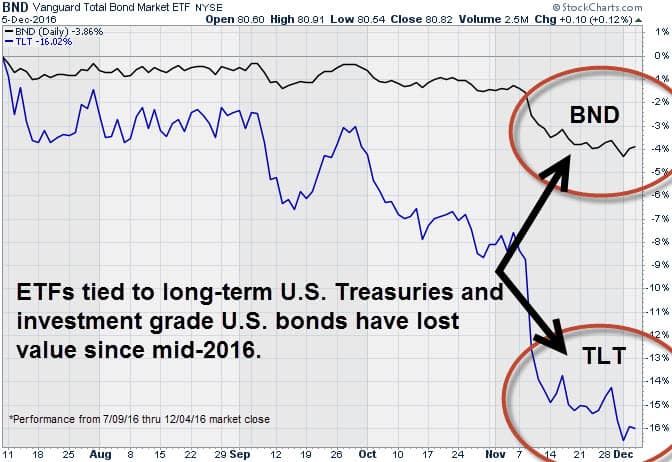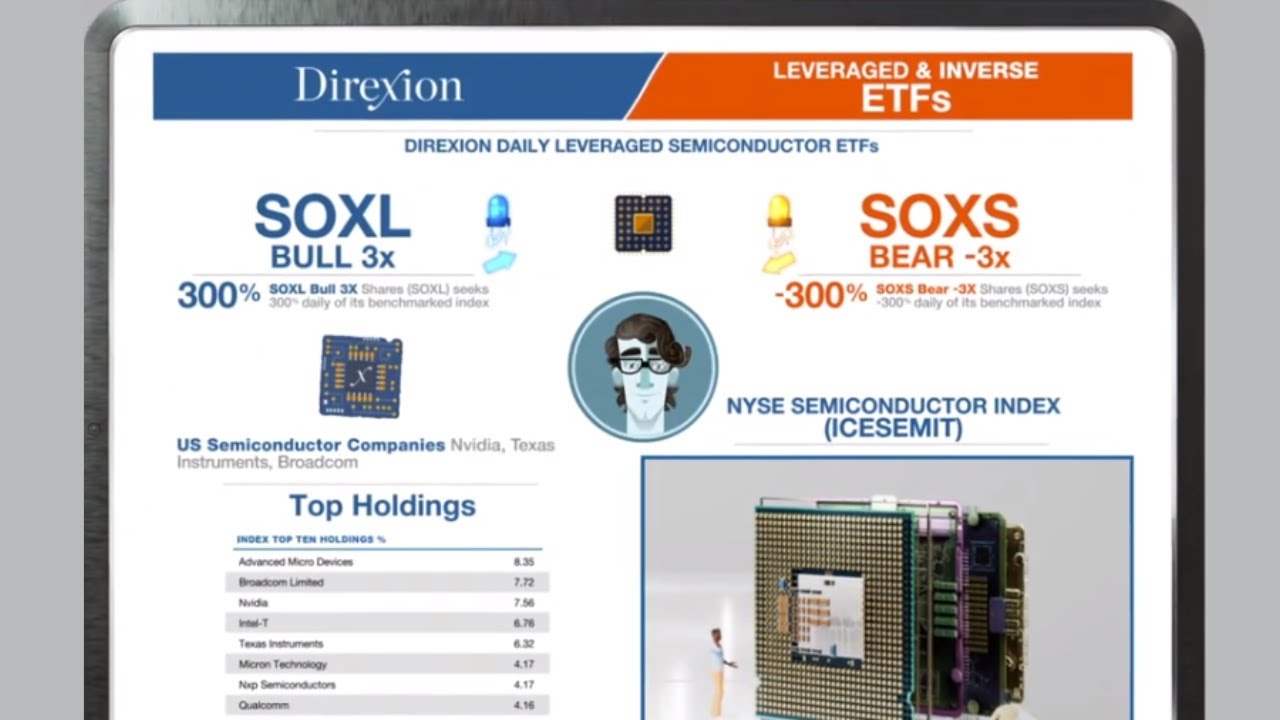News flash: Investors who assumed their investments in conservative bonds and bond funds (Nasdaq:LSBRX) were safe from losses are learning otherwise.
Since mid-2016, the performance for U.S. bonds (NYSEARCA:BND) with top credit grades have sunk almost 4%. For perspective, the 12-month yield on ETFs tracking the Barclays U.S. Aggregate Bond Index is just 2.40%. Put another way, bond investors have already seen more than one-year’s worth of income wiped out by falling bond prices.
(Audio) Year-End Portfolio Planning Tips
Bonds, like other securities, fluctuate in price and can lose value. This is even true for tax-exempt municipal bonds (Nasdaq:VWAHX) who have seen their market value fall around 5.5% over the past several months.
Unfortunately, many investors have incorrectly used bonds as their “safety net.” This is particularly true of financial groupies who use a portfolio mix of 60% stocks and 40% bonds as their guiding light. The 40% of their portfolio allocated to bonds is still at risk because bonds can and do lose market value just as they are right now.
First, let me be clear that bonds are indeed a core asset class. And as such, they rightfully deserve a place inside a person’s core investment portfolio. However, bonds have absolutely no place within a person’s margin of safety bucket. Why? Because the margin of safety bucket is strictly reserved for financial assets that provide a) zero volatility, b) principal protection, and c) guaranteed income. (A full explanation of margin of safety and how it works is covered in “Build, Grow, and Protect Your Assets: A Step-by-Step Guide.”)
The chart shown above illustrates another huge risk for bond investors, particularly those who are overloaded with long-term U.S. Treasuries (NYSEARCA:TLT). When interest rates increase, as they have been doing over the past few months, bonds with long-term maturities are hit the hardest. Higher rates diminish the value of the income stream behind long-term bonds thereby pushing down bond prices.
Since early July, the iShares ETF tied to long-term U.S. Treasuries with maturities longer than 20 years has crashed 16%. While this has translated into heavy losses for Treasury bond investors, it’s been a bonanza for bears. The Direxion Daily 20+ Year Treasury Bear 3x Shares (NYSEARCA:TMV) has soared +48.8% over the past three months. TMV aims to deliver triple (300%) daily opposite performance to long-term U.S. treasuries. That means if long-term U.S. treasuries are down 1% on any given day, TMV should be ahead by 3%.
If your investments have suffered a setback because of the recent correction in bonds, don’t panic. The prudent course of action is to reduce your exposure to the bond market and to immediately incorporate an adequate margin of safety within your overall portfolio.
What if the market correction in bonds (NYSEARCA:BOND) and U.S. treasuries deepens? The good news is you will be less impacted after your portfolio’s adjustments are made. Moreover, your investment portfolio’s margin of safety will give you a satisfactory cushion that protects your hard earned capital and keeps you liquid.




